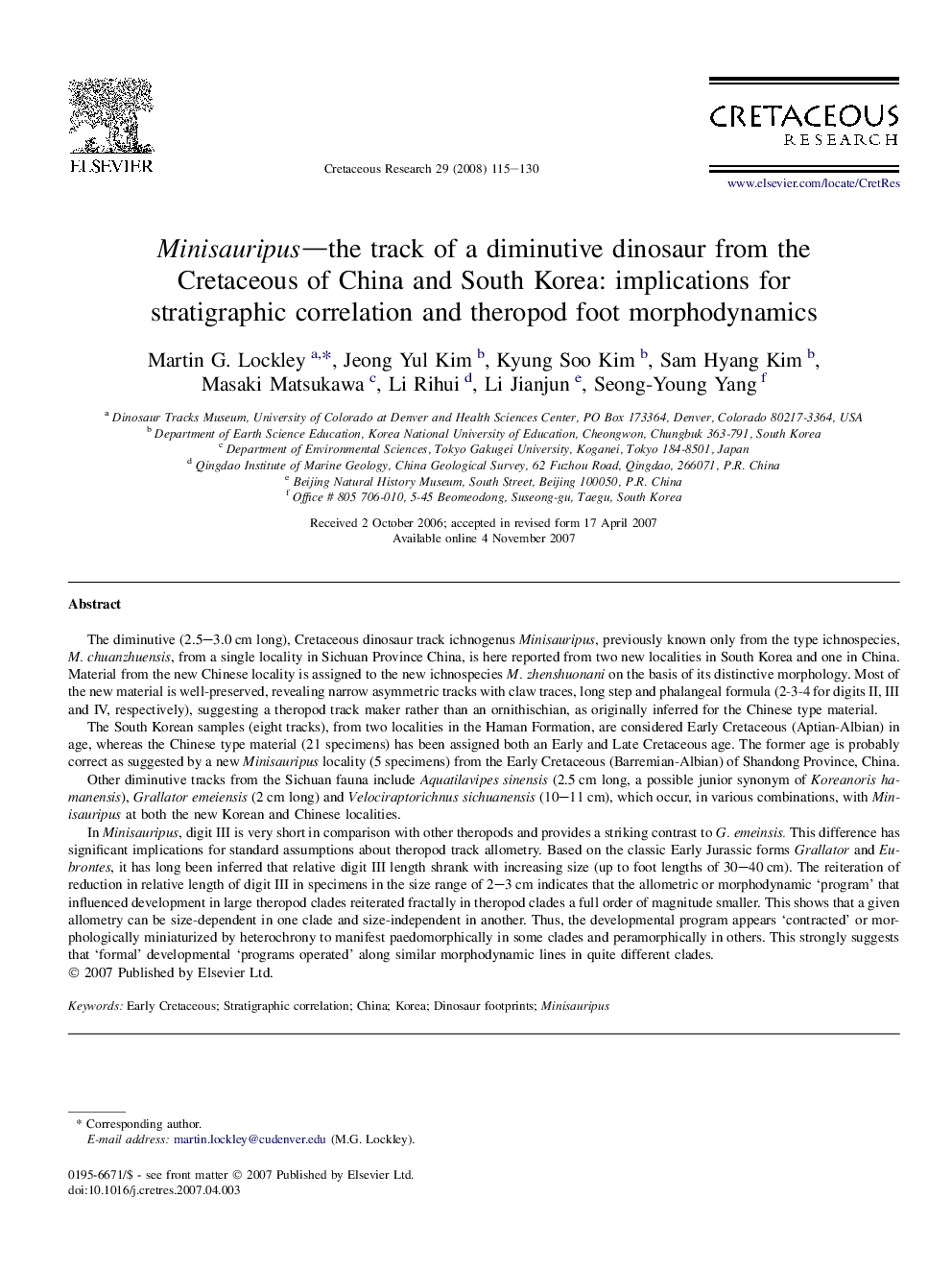| کد مقاله | کد نشریه | سال انتشار | مقاله انگلیسی | نسخه تمام متن |
|---|---|---|---|---|
| 4747901 | 1359943 | 2008 | 16 صفحه PDF | دانلود رایگان |

The diminutive (2.5–3.0 cm long), Cretaceous dinosaur track ichnogenus Minisauripus, previously known only from the type ichnospecies, M. chuanzhuensis, from a single locality in Sichuan Province China, is here reported from two new localities in South Korea and one in China. Material from the new Chinese locality is assigned to the new ichnospecies M. zhenshuonani on the basis of its distinctive morphology. Most of the new material is well-preserved, revealing narrow asymmetric tracks with claw traces, long step and phalangeal formula (2-3-4 for digits II, III and IV, respectively), suggesting a theropod track maker rather than an ornithischian, as originally inferred for the Chinese type material.The South Korean samples (eight tracks), from two localities in the Haman Formation, are considered Early Cretaceous (Aptian-Albian) in age, whereas the Chinese type material (21 specimens) has been assigned both an Early and Late Cretaceous age. The former age is probably correct as suggested by a new Minisauripus locality (5 specimens) from the Early Cretaceous (Barremian-Albian) of Shandong Province, China.Other diminutive tracks from the Sichuan fauna include Aquatilavipes sinensis (2.5 cm long, a possible junior synonym of Koreanoris hamanensis), Grallator emeiensis (2 cm long) and Velociraptorichnus sichuanensis (10–11 cm), which occur, in various combinations, with Minisauripus at both the new Korean and Chinese localities.In Minisauripus, digit III is very short in comparison with other theropods and provides a striking contrast to G. emeinsis. This difference has significant implications for standard assumptions about theropod track allometry. Based on the classic Early Jurassic forms Grallator and Eubrontes, it has long been inferred that relative digit III length shrank with increasing size (up to foot lengths of 30–40 cm). The reiteration of reduction in relative length of digit III in specimens in the size range of 2–3 cm indicates that the allometric or morphodynamic ‘program’ that influenced development in large theropod clades reiterated fractally in theropod clades a full order of magnitude smaller. This shows that a given allometry can be size-dependent in one clade and size-independent in another. Thus, the developmental program appears ‘contracted’ or morphologically miniaturized by heterochrony to manifest paedomorphically in some clades and peramorphically in others. This strongly suggests that ‘formal’ developmental ‘programs operated’ along similar morphodynamic lines in quite different clades.
Journal: Cretaceous Research - Volume 29, Issue 1, February 2008, Pages 115–130